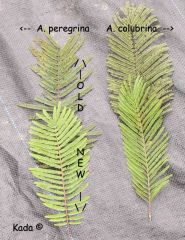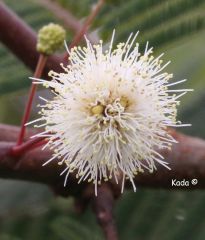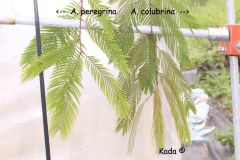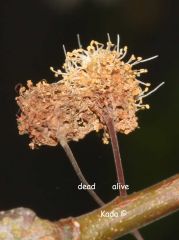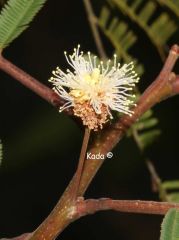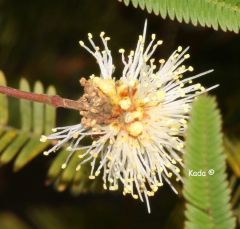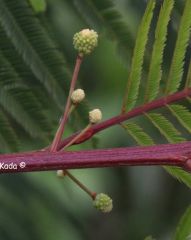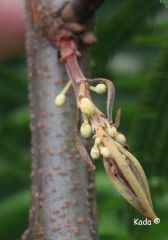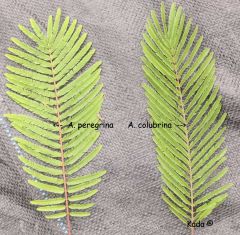-
Content count
1,446 -
Joined
-
Last visited
Content Type
Profiles
Forums
Calendar
Blogs
Gallery
Store
Everything posted by kadakuda
-
-

Banisteriopsis caapi cultivation notes and discussion
kadakuda replied to sagiXsagi's topic in Ethnobotany
green cuttings can work but no where near as well as thicker woodier cuttings. they layer very well. but cuttings work well enough. one thing i noticed that maybe is neglected is they tend to grow more up than out. i have bushes that are meters wide with no support and they grow slow. if htey have somethign to climb, they are noxious. training sideways is somewhat hard. they basically grow up adn fall and repeat. -

Harvesting every leaf off of psychotria viridis deterimental to plant health or not?
kadakuda replied to Meditator's topic in Ethnobotany
short answer, ok. but has a risk. long answer: ok first to compare to salvia, it cant be compared. salvia has s very succlent stem and even old growth structure is very different than a very woody hard stem like pschortira. so cutting right down the regrowth habit will be different. with only a small bit of experience and very harch fungal tropical environment here i will refrain from commenting on salvia other than it can be very bad.... brugmansia grow in a very different environment usually than psychotria. they are also spread quite commonly naturally via stem breakage and rooting, this is why in many areas of distribution brugmansia species will grow in valleys/rivers etc. they will grow well in streams, break and root and carry on. In my country they are naturalized but cannot reproduce. meaning all plants her ein the wild are started via animal and they proliferate via cuttings. here we have typhoons and crazy ass storms and they break naturally go down stream, rot and grow. i know places kilometers long where they cover the river valleys. but not one seed is ever produced. anyway, this kind of plant is easily rooted, even the bare stem in sun has pre-spooge on the stem they can rot from. psychotria can as well but not so readily or fast, so it takes more time. So if you are worried about losing a plant, dont. the plants will normally stand for total defoliation bt i like to play safe, leave a few leaves. your purpose will also differ as to methodology. if you want to cut down to get compact growth or yo just want to harvest? we have regularly harvested everything but the tips without harm. thast for harvests. if yo want compact growth you could cut down but i dont see why? if you hack away all the foliage (thus getting a harvest) and leave the upper most pair of leaves the stems will sprout new stems and yo will still get super lush compact growth so its win win as i see it. granted with new stems the first pair or few of leaves will be smaller in size but htey get large after #2-4 node. plus small leaf size is often due to not enough shade/too much light. in the end, if harvest is the goal, 1 good leaf is something like 0.1 gram...are you going to suffer leaving a couple leaves on to ensure the plant is happy and transporting water/nutrients and eating light? I get in the beginning we all get over excited, but the weight gain witha few leaves vs. the plants recovery time isnt worth it IMO.- 8 replies
-
- 1
-

-
- harvesting
- psychotria
-
(and 1 more)
Tagged with:
-
Very cool, thanks for the pics! I'll check the Anadenathera book again and post some key points for ID here, i havent looked at it for a couple years. But i can say my pics above are definitely not positively identified. the peregrina came from a friend in Colombia, so I am basing that ID solely on the location the trees came from and his label. nothing more. the other "colubrina" is simply what they were sold to me as, i cant say much more, but the 2 types are fairly different from each other. my colubrina when yong also hung sideways until some stems got woody enough. now new growth gets woody pretty quick, but side shoots tend to sag. typhoons have kicked its ass over teh years though, so honestly im shocked at how resilient they are after they get past their seedling stage. i planted some "peregrina" along my ditch when i started my new farm about 3 years ago i guess. same seed batch as pics above. the grass/weed machine took quick care of them, hadnt seen them for ages. so last couple weeks ive been reclaiming my ditch edge from the insane grasses that have been growing there and i find a little twig of a thing with 1 leaf. amazed how well they survive, if the roots are good they just dont die.... i sent a few seeds to a member here when i got them. cant remember who or when but they did arrive, i wonder if they are grown up by now? all my flowers are now dead and fallen off, i am not getting and seeds this run either.... Rahli, in your location is it wet/dry/cold/hot season now? I think you are in Aus, so our season will be sort of flipped around, but trying to figure out what it is they like to flower. So far i have been thinking too wet in my situation. the soil never dries out.
-
-
-
Anyone have more thoughts on these pictures? the pollen does release and gets nice and dusty. i tried fingering the flowering, but only one tree is flowering now, so im stuck with trying to self pollinate. also curious what people think of the difference between the 2 trees. i have not positively identified them just going by what they were given to me as and also the location in which they were collected. A. colubrina vs A peregrina. the flower pics are all peregrina, the colubrina has never flowered that i know of and is 3 times old. the trunk at its base (its being blown over and broken in 2 different typhoons so upper portions are thinner) is about 25cm in diameter. the peregrina that is flowering is about 5-10cm diameter. interestingly that lot of seeds i grew a lot out and the biggest trees are about 4 meters and about 15cm dia., never flowered. this one is a runt and maybe 3 meters tall but way skinnier. difference being soil/water, but i wonder how big a role that has on reproduction. the large colubrina is growing near the flowering peregrina and is on the same row/soil type. the colubrina also produces far more of those sugar crevices in the leaves, i cannot remember the term for them. more numerous and produce more juice, but that could be largely due to tree/root size difference. lastly i also notice a huge difference in growth of flowering branches vs non. the vegetative growth is very stretched out and long while the flowering growth is quite short, to be expected. but it seems like a semi decent clue as to whether the tree is going to flower. i find these tiny little balls hard to see if they are up high with a bright sky behind them.
-
-
-
-
-
-
-
this is perhaps mostly so i dont forget the date. but my peregrina trees are just starting to bud. the colubrina is tall and hard to check but ill get a ladder over there to see. any thoughts/tips that might help them along?
-

Growing Virola !! - or trying to find the way through the jokers and thieves .. : Mission Lightening Tree, The hunt for "Red" Otoba
kadakuda replied to ☽Ţ ҉ĥϋηϠ₡яღ☯ॐ€ðяئॐ♡Pϟiℓℴϟℴ's topic in Ethnobotany
I hear you man, ive been after this genus for a long time. always close, but never there. the few seeds i trusted from brazil always got nabbed by customs Might try again with that friend if his trees are setting seed. but it was touchy. -
would also totally depend on your environment. growing in tomato kind of soil in wet climates will lead to a long path of fungi and bacteria....about as colorful as the trips some of these cacti can produce...Not sure about Aus, but i think its dry enough in most of NA humidity wise to get away with some soil soil. perhaps certain microclimates in the SE would be bad...but even the PNW is dry enough to allow soils so long as rains and frost are guarded against.
-
I was thinking of asking specifically for a new flowering plant, but thought it would be far more useful to have a list of plants we have grown (meaning personal experience, not regurgitated internet speak) of plants that can produce viable seed by themselves vs those that need a buddy. As it were, my Voacanga africana are flowering, but they are all cuttings from a single plant so was wondering about them as some of my other Apocynaceae don't produce seed solo. Just an ongoing list as we find out we add to it. Lots of plants i have growing i cannot find a real good definitive answer on (mostly due to lack of interested i assume). Lets use botanical names as a base and lower ranks when known/relevant. Argyreia nervosa - Both. Have had plants totally sterile as well as plants that are setting seed alone within 9 months. Banisteriopsis caapi- Self sterile based on single plants of Tunkunaca type. Brugmansia aurea - self sterile Brugmansia suaveolens- self sterile Lophophora williamsii - Self fertile, some plants seemingly less so or not. Mitragyna speciosa - Self sterile (based on multiple single clones growing together without viable seed for 6 years). 'Formosa' clone. I'll add to the list as well soon but wanted to start this now before i forget, gotta run.
-
the trees can take it, only worry is that they are fragile tiny seedlings. I never like doing them indoors for fear of rot/pathogens. they do die off soemtimes. if you can confidently avoid fungus, keep them indoors. others a coldframe or bright window might be better?
-
try all the names you can find googling. Aside from Thailand, the other places i have traveled in asia collecting it i have had some luck using the genus name, mitragyna. some people use that. in the end printing pictures of the leaf and the flower* have proven most useful in my travels.
-
caespitose forms are liekyl the worst growth form to grow outdoors in rainy areas due to the crevices staying moist for prolonged periods and rotting. less heads i would think are better, and heads that are spaced out a bit to allow some air flow between would probably be best.
-
Exciting! a couple months ago i hacked mine down to twigs while cleaning up the farm so i am not expecting any, but will check now that you guys are gettting them. But i assume you guys are in southern hemisphere so maybe i can expect them at a differetn time? I am curious what triggers them to flower. Anyone know the natural season in their native home? i havent yet heard of succes, or had any, but has anyone had succes with cuttings or other methods that are nto seed or tissue culture?
-
have you guys had snails kill your own root lophs? Ive had it happen a couple times, but not often. we mostly have african land snails, and they tend to eat through trich spines before they touch the lophs. to the original poster, its not always the amount of water but the duration they stay wet. i can put them out in typhoons jsut fine so long as i let them dry within a week or 2. think skin rashes when you are hiking, not soi differnt.
-

Looking for Lophophora Pics For My New Project, Lophophora.de
kadakuda replied to Evil Genius's topic in Cacti & Succulents
nice plants zelly, as usual but isnt caespitosa simply a term used to identifiy a form of growth, not strictly a variety? I know there is a variety that is caespitose, but otherwise normal varieties/species can cerftainly grow caespitose. Maybe its the beer talking, but many grafted "normal" plants will grow in this fashion, no? Seems a little bit like calling me a race of brown when i get a suntan, then back to caucasian when i stay indoors for a month. For me a variety needs to be genetic and reproducible in different environmental circumstances. Just saying, might be outa my ass though. Philocacti, in my opinion, there are 4 true species and 5 i like to recognize: L. diffusa, fricii, koehresii and williamsii. From growing and breeding, i personally want to call jourdaniana a distinct species but i know there are rules to follow and they arent found in the wild last time i checked so we cant really say that but i feel it is different from other lophs on the species level. I totally agree with the kaktusy publication that diffusa/fricii/koehresii are more closely related to each other than to williamsii. and i also feel fricii and koehresii are perhaps the closest of all the lophs. i may be reading it wrong, but why would "variegated"loph = williamsii? i have bred variegated hybrids of other lophs that didnt include williamsii, as well as soem that didnt incldue eitehr willy or diffusa. i veiw variegated as a retardation and can be present in any species. I dont really subscribe to the "varieties" like pentagona as tehy are seemingly more jsut random froms that take place. i see platns with the 6 rib formation with other offsets being regualy 5/8 formation. If ti can be reproduced consistantly, then i think its worth looking into, otherwise its just natural variation, not variety. EG i have lots of pictures of cultivated plants, if you need any send me a message. most of my pics are of the 5, or are organised as teh 5, i mentioned above. -
bummer, but cool. All mine also rotted, or rather dried up and stayed as is for a couple years. Most of the time, even that area of the plant stopped growing and the plant took of fin other areas (crested tbm). Its going to happen sometime, and hopefully it happens to someone how has another trich with flowers ready to pollinate.
-
the stock is leafless, scion is large i second cutting the pereskiopsis short and rooting them on soil level.

